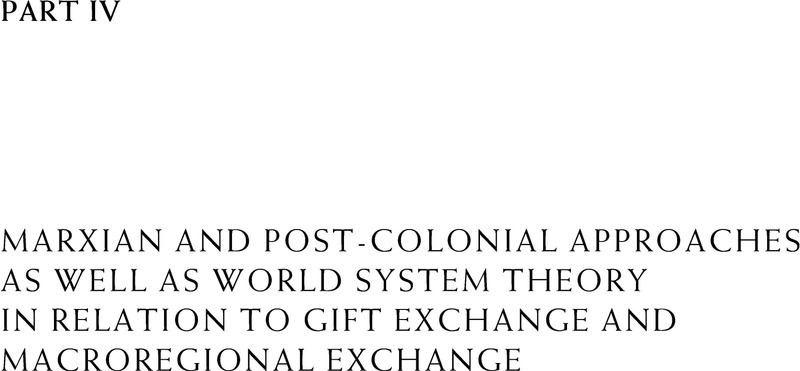Book contents
- Trade before Civilization
- Trade before Civilization
- Copyright page
- Contents
- Contributors
- Chapter One New Perspectives on Long-Distance Trade and Social Complexity
- Part I Exchange and Social Evolution: Forms of Trade in Egalitarian, Transegalitarian, and Chiefdom Societies
- Part II The Role That Specific Institutions And Agents Played in Long-Distance Exchange
- Part III The Role of Political Economy and Elite Control in Long-Distance Exchange
- Part IV Marxian And Post-Colonial Approaches as well as World System Theory in Relation to Gift Exchange and MacroRegional Exchange
- Part V Commentary on Contributions to This Volume
- Index
- References
Part IV - Marxian And Post-Colonial Approaches as well as World System Theory in Relation to Gift Exchange and MacroRegional Exchange
Published online by Cambridge University Press: 25 August 2022
- Trade before Civilization
- Trade before Civilization
- Copyright page
- Contents
- Contributors
- Chapter One New Perspectives on Long-Distance Trade and Social Complexity
- Part I Exchange and Social Evolution: Forms of Trade in Egalitarian, Transegalitarian, and Chiefdom Societies
- Part II The Role That Specific Institutions And Agents Played in Long-Distance Exchange
- Part III The Role of Political Economy and Elite Control in Long-Distance Exchange
- Part IV Marxian And Post-Colonial Approaches as well as World System Theory in Relation to Gift Exchange and MacroRegional Exchange
- Part V Commentary on Contributions to This Volume
- Index
- References
Summary

- Type
- Chapter
- Information
- Trade before CivilizationLong Distance Exchange and the Rise of Social Complexity, pp. 287 - 382Publisher: Cambridge University PressPrint publication year: 2022

